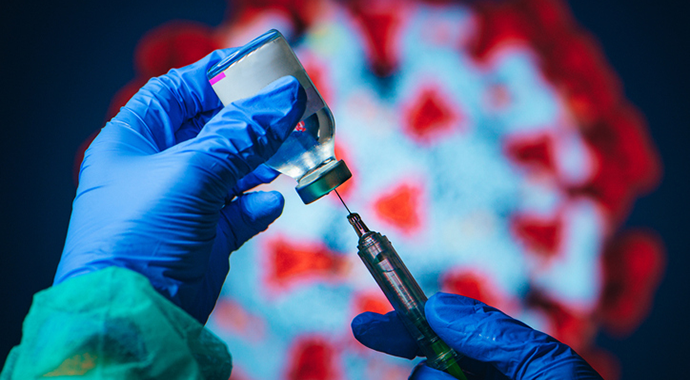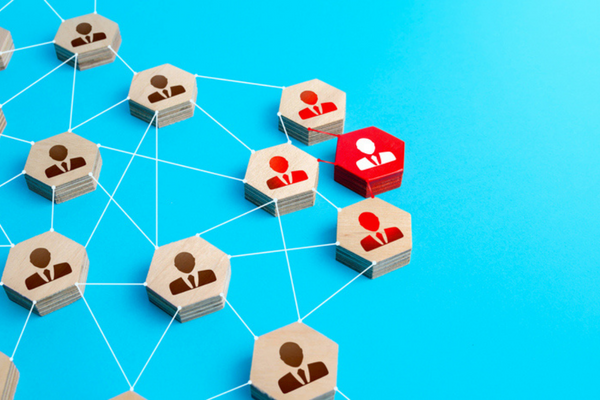
Key Takeaways:
- Baillely explains what the “new norm” now implies for both chemists and chemical engineers
- Gerard Baillely’s 'Three C’s' of valuable non-technical skills
- What challenges Bailelly’s faces in his position and what strategies he uses to deal with them
At a 2017 event focused on a collaboration between Procter & Gamble and the University of Cincinnati, you said the following: “Modeling and simulation is now the new norm for innovation in the industry.” Can you elaborate on what you meant? What are the implications of this ‘new norm’ for chemists and chemical engineers?
Great question. In the industry, the new imperative is to innovate faster with truly breakthrough solutions for the customers or consumers they serve. For a very long time, science was either theoretical or experimental, one or the other. The norm in the industry for applied research & development was experimental. This resulted in a slow and expensive journey in the physical world from lab to pilot plant to plant.
The creative collision of traditional sciences and computer possibilities has created a new norm. With advances in hardware and software algorithms on one hand and giant leaps in analytical capabilities on the other hand, chemists and chemical engineers now have a “3rd way” to innovate in the industry. They can test first in the computer the application of scientific theories to their field or the validity of their hypothesis to a particular problem they want to solve. They can use the multiple advances in analytical (imaging, cutting edge MS or NMR, non-invasive Multiscale imaging & microscopy) to build and validate at lab scale their simulations. Finally, they can screen virtually their solutions and accelerate the final journey in the physical world from prototyping to manufacturing.
Those who master the creative power of the collision between mainstream science and data will stay in the game, build competitive advantage and create new spaces and businesses.
What non-technical skills do you most highly value among your scientists at P&G?
Let us try a theme and variations on the letter C, shall we? I look first and foremost at the combination of Conviction, Critical thinking and Curiosity (Voracious curiosity for learning, for solving problems, for inclusion of diverse vantage points from colleagues, interdisciplinary or emerging fields, external partners, backgrounds). When individuals have these 3 Cs, they have huge potential for growth, for rallying partners and ultimately build competitive advantage and value creation for their company through non- obvious insights, smart reapplication of proven concepts and rigorous science.
In P&G, we adopt “Leading with Courage” as a performance vector, congruent with these three Cs. Of course, the 4th and 5th C’s (Communication and Confidence) are mentioned by all as a point of entry to engage senior managers or investors. Yet, for R&D, those skills can be learnt and are vain without the substance of the first 3 Cs. I will also venture to say that R&D leaders must have more patience with listening to consumers or technologists who have diverse communication skills or levels of confidence. This is a prerequisite to discern the next non-obvious insight that can solve problems or create opportunities in our fast moving consumer goods industry.
According to the Wall Street Journal, P&G and other consumer-products companies are focusing far more on skin care market, because, as the Journal put it, “Americans are having fewer babies and households are shrinking, denting demand for staples.” When P&G pivots to a market such as skin care, how does it obtain the necessary scientific expertise to support it? For example, do you re-direct some P&G chemists to new projects? Do you import the expertise through purchasing existing skin care companies?
Before we get into skin care, let me say we continue to be committed to Baby Care and Household Care categories. We see opportunities for these categories behind consumer, technology and society shifts and trends. In this context, innovation is the antidote to category shrinking or commoditization.
Turning to skin care, we’re fortunate to have strong talent at P&G that have unparalleled mastery in the field of skin care from consumers to biotechnology. Those talents have been core to the growth of Olay and SK2. As you point out, P&G has made some recent smaller acquisitions in our Skin and Personal Care category (e.g., Native, Snowberry, This is L., Walker) to take us into new benefit spaces or segments in the market that matter to consumers and where we’re not already present. We were drawn by both the brands and the expertise, and typically invite those experts to join us.
And as I am talking to an ACS audience, at this very moment, we have several R&D positions, including Beauty Care R&D positions, available now on our pgcareers.com website! Our intent is to continue to hire and develop the best people in an inclusive environment, whether they are from inside or outside the company. We maintain develop-from-within as our primary strategy/approach, but we are also very open to external hiring to ensure we have the best people and expertise, especially in emerging and rapidly-evolving fields.
In response to consumer demand – as well as its own employees - P&G is increasing its efforts to develop more eco-friendly packaging and products. What is your team’s role in achieving this goal?
Innovation is going to play a critical role in helping drive new solutions that not only better meet consumer needs, but also help to drive positive impacts. For example, we know that recyclability and recycled content of packaging is of growing importance to our consumers. Our team developed a new technology to recycle polypropylene that returns it to a near virgin state and will enable much broader use of recycled polypropylene. We have licensed this technology and once commercialized, we believe it has the potential to transform PP recycling.
On the product side, we recently shared information on EC30, a line of personal and home care products with no added water in the formula. These products are 80% lighter, require 70% less space, and result in significant greenhouse gas reductions from transportation. While still in early trials, this product was the result of years of research and is another example of innovation that can drive significant positive impacts. We have other examples we could cite (e.g., compaction, cold water washing technology, etc.) that demonstrate how our R&D and the innovation we create play a critical role in driving actionable sustainability benefits.
Yet, this is not the end of the journey, far from it. We are advancing progress against a number of goals, including getting to 100% recyclable or reusable packaging. We will make this happen through a combination of material choice, package design, and working with others to create new innovative solutions for recycling. Importantly, we know we can’t accomplish this alone and will need to work with partners up and down the value chain and with academic and civil society organizations. We would certainly welcome input/ideas from ACS members who can help us advance progress on this front!
P&G is rolling out a new line of people and pet-safe household insecticides, branded as Zevo, to compete with Raid and other brands that lack that safety feature. While P&G purchased the technology from Envance Technologies, rather than develop it in-house, what role, if any, does P&G R&D team have pre- or post-purchase of this technology?
We love this project. Many consumers still look for insect solutions that are non-invasive and they can trust to be safe for them and their loved ones. Zevo uses familiar essential oil ingredients to deliver highly effective insect control while being safe around people and pets, when used as directed. The specific technology we licensed from Envance Technologies to launch Zevo is only one piece of the puzzle to deliver a holistic proposition that delights consumers
What’s the biggest challenge you confront in your job as VP - Corporate Functions Research & Development? What is your basic strategy for dealing with it?
Capturing the minds, hearts and unleashing the insights of a wonderfully diverse palette of R&D talents is one prerequisite to deliver my mission as VP. In this context, my biggest challenge, as an organic and inorganic chemist with 34 years under the belt, is how to capture the hearts, minds and insights of the millennial or Gen Z scientists. They have different expectations to mine, they are naturally driven to cross disciplinary fields. They are digitally savvy, fearless with hierarchy and far more comfortable with an open source ecosystem of information and data than we. Microbiology, Genomics, Metatranscriptomics, Bioinformatics is second nature to them.
A strategy? Learn, learn and learn again from them to be adept at translating into your decision process their very way of thinking, doing the work and their own insights. That requires going beyond a traditional business conversation on results, progress, success or failure. It requires stimulating dialogue on how they do the work in the lab, on the computer or how they debate in a team room. And between you and me, make time to practice some coding and database query just to be in touch.
You were educated in France and have spent many years in the United States. Which leads to the obvious question: French or California wines?
Glad you ask. I am supposed to be the right person to ask:
- Unbiased (I lived for 11 years in the UK, a country inclusive to wines from the world. Spanish, South African or Australian wines are as much the norm as French or Californian wines)
- Genetically predisposed (born in Cognac, my grandfather was a master sommelier, my wife is a perfumer and born in Scotland, heartland of whiskeys)
- Immersed in the right scientific environment (HPLC, GC, AI are supposed to be the keys to penetrate the science of wines).
So hear me: Wine is an holistic experience. French wine is the choice for enjoying unpredictable twists yet irresistible experiences, as well as the poetry of their names. What can beat names like Meursault, Richebourg, Chambertin, Clos de Beze? California is the choice for dependable, memorable and iconic cachets. Did I make both parties happy? Well, I have a soft spot for Oregon’s Pinot Noir.

Gerard Baillely is Vice President, Research & Development, Corporate Functions for the Procter & Gamble Company. Gerard joined P&G’s R&D in 1985, after graduating from Lycee Descartes Tours in France in Mathematiques, Superieures & Speciales as well as for Chemistry from the Ecole Superieure de Chimie Industrielle de Lyon.
Gerard leads multiple strategic R&D disciplines for P&G covering digital innovation, analytical, data science, advanced statistics, life sciences and modeling to drive innovation, quality, operational speed and efficiency. During his 33-year career, Gerard has created a portfolio of products and initiatives that address unmet consumer needs across different categories (Fabric Care, Home Care, Oral Care) and regions (NA, Europe, Asia and LA).
In addition to his R&D Corporate Function responsibilities, Gerard is the Stewart of the Chemistry and Life Science Communities of Practice that span across P&G business units. Externally, Gerard is a member of the board for Living Well Collaborative, promoting the development of products and services for the ageing consumers. Gerard has been a member of the board of the Consumer Specialty Product Association between 2012 and 2016. Gerard is a member of the AOCS (American Oil Chemist’s Society) Board of Directors and participates in activity programs that connect ACS (American Chemical Society) and the industry. Gerard has been appointed a member of the Board on Chemical Sciences and Technology within the National Academies of Science, Engineering and Medicine. On November 15th, 2018, Gerard was awarded the Chevalier de L’Ordre National du Mérite distinction by the President of France.
This article has been edited for length and clarity. The opinions expressed in this article are the author's own and do not necessarily reflect the view of their employer or the American Chemical Society.
Copyright 2019 American Chemical Society (All Rights Reserved)










